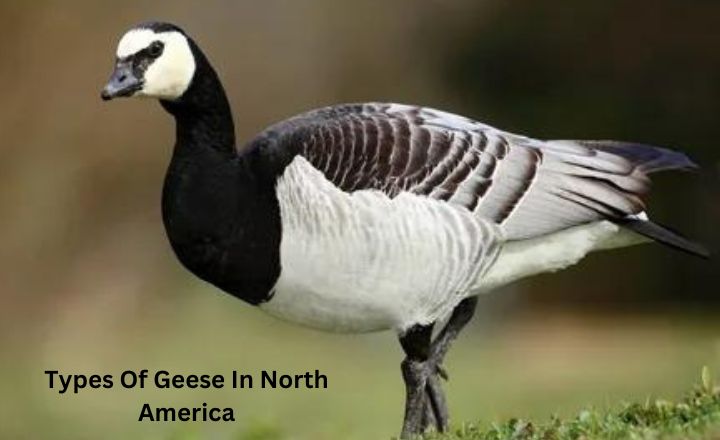Several species of geese can be found in North America, with some being more common than others. The Canada goose is the most widespread and recognizable species, known for its distinctive black head and neck with a white chinstrap. Another common species is the snow goose, which has a white body with black wingtips and pink feet.
Less frequently seen species include the greater white-fronted goose, brant goose, and Ross’s goose. These geese can often be spotted during migration seasons in various regions across North America. Each species has unique characteristics and behaviours that make them fascinating to observe in their natural habitats.
Geese that Breed in North America (8 Species)
Canada Goose
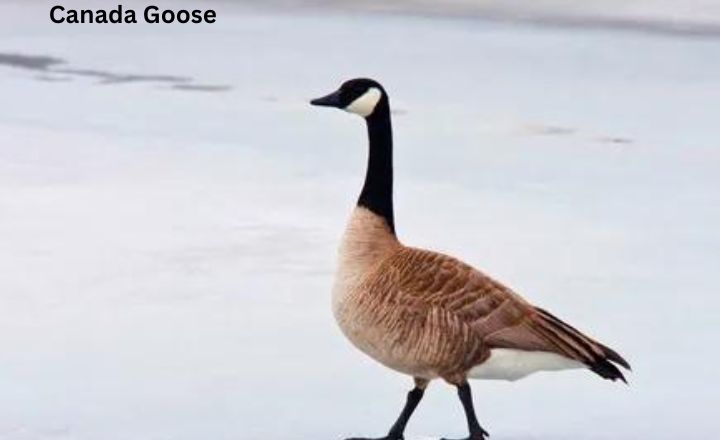
The iconic Canada Goose, known for its distinctive black head and neck with white cheeks and chinstrap, can be found breeding throughout North America. These majestic birds typically breed in habitats such as marshes, lakes, rivers, and even urban areas. Their name suggests a solely Canadian presence; Canadian geese are also prevalent in the United States. Do you like bluebirds? bluebird is my favorite bird if you want to get info about the bluebird.
Regarding their diet and foraging behaviour, Canada Geese primarily feed on grasses, grains, roots, and aquatic vegetation. Their knack for grazing in open fields or near water bodies makes them relatively easy to spot. Bird enthusiasts looking to catch a glimpse of these birds in action can visit parks with ample green spaces or explore wetlands and coastal areas where they often congregate during the breeding season. So, if you’re keen on observing these elegant creatures up close, watch for Canada Geese in your local natural habitats!
Cackling Goose
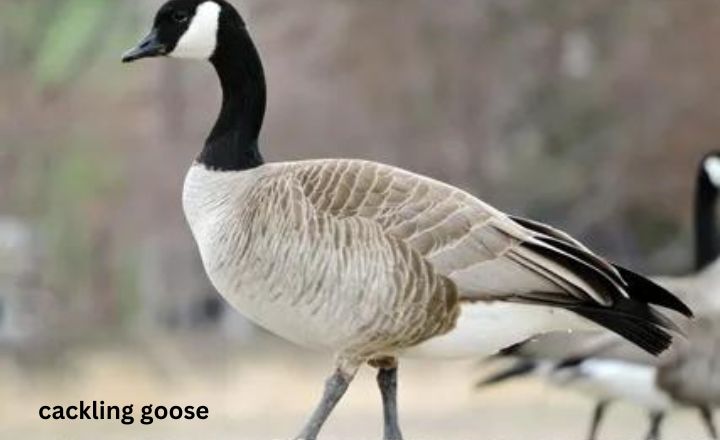
Cackling Geese are one of the most fascinating waterfowl species that breed in North America. Due to their similar appearance, they are often mistaken for Canada Geese, but they are a distinct subspecies. Cackling Geese can be identified by their smaller size and darker plumage compared to Canada Geese.
These geese have a wide range across North America, breeding in the Arctic tundra during summer and migrating south for winter. They can often be found in grasslands, wetlands, and agricultural fields, where they forage primarily on plant matter such as grasses, sedges, and grains. Their varied and adaptable diet allows them to thrive in different habitats throughout their range.
To observe Cackling Geese in North America, head to areas along the Pacific flyway, such as California or British Columbia, during migration season. Watch for flocks of these geese feeding together in open fields or flying overhead with their distinctive honking calls. These social birds exhibit interesting foraging behaviors that involve grazing on land while keeping a close watch for potential predators.
Snow Goose
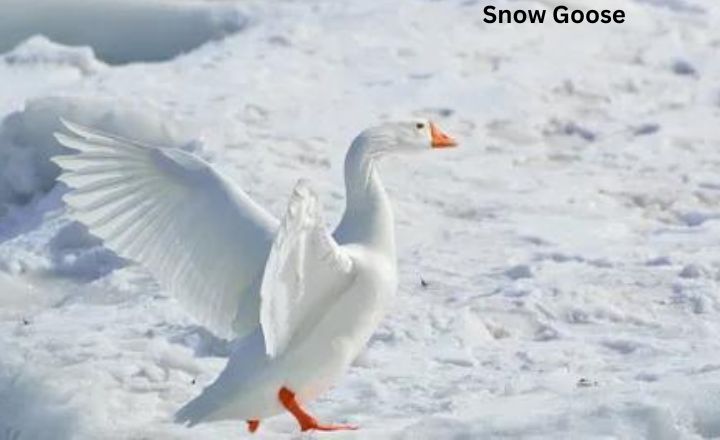
The Snow Goose, known for its stunning white plumage and black wingtips, is one of the most iconic types of geese in North America. These graceful birds can be observed across various habitats, from coastal marshes to inland fields. Their diet consists mainly of grasses, sedges, and grains, making them expert foragers on land and in shallow water. Regarding breeding grounds, these geese establish their nests with remarkable precision in the Arctic tundra.
These geese can be identified by their distinctive V-shaped flight formation and high-pitched calls that echo across the sky. Their range spans from the Arctic regions of Canada down to the southern United States, with large populations nesting in the Hudson Bay area.
Regarding diet and foraging behavior, Snow Geese primarily feed on plant matter such as grasses, sedges, and seeds. They often see grazing in fields or wetlands where they can find abundant food sources. In terms of where to find this bird, birdwatchers flock to areas like Bosque del Apache National Wildlife Refuge in New Mexico or Squaw Creek National Wildlife Refuge in Missouri during migration seasons to catch a glimpse of these majestic birds in action.
Ross’s Goose
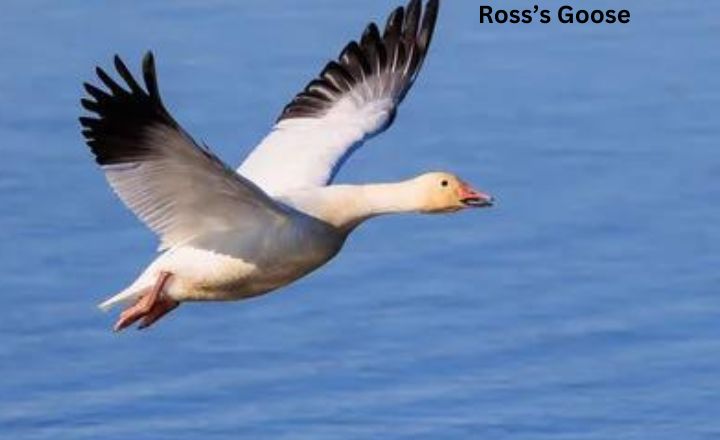
Ross’s goose is a small species of waterfowl that is a North American geese. Due to their similar appearance, Ross’s geese are often mistaken for the more common snow goose. One key difference lies in the size and shape of their bills, with Ross’s geese having shorter and stubbier bills than snow geese. These geese are primarily found breeding in the northern regions of Canada and Alaska before migrating south to the United States during winter.
Regarding diet and foraging behavior, Ross’s geese primarily feed on grasses, sedges, and aquatic plants. They are known for their grazing behavior, walking on land or shallow water while plucking vegetation with their bills. Ross’s geese are strictly herbivores, unlike other geese species that may also consume insects or mollusks. If you’re looking to spot these graceful birds in North America, head to coastal marshes, wetlands, or agricultural fields, where they can often be seen foraging for food or resting alongside other migratory waterfowl.
Greater White-fronted Goose
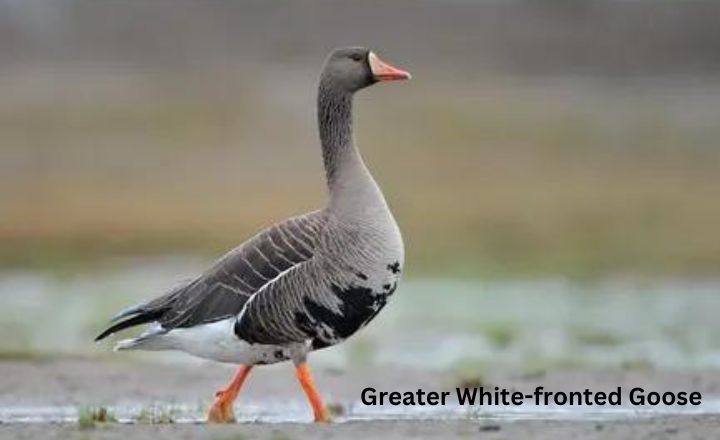
One of the most fascinating types of geese in North America is the Greater White-fronted Goose. With its distinctive orange legs and pink bill, this goose is a sight in the wild. It can be found across various habitats, from wetlands to fields, showcasing its adaptability.
Known for their distinctive call and graceful flying formations, these geese have a diverse diet that includes grasses, grains, and aquatic plants. They are opportunistic feeders and can often be spotted foraging along riverbanks or in agricultural fields. To glimpse these magnificent birds, head to places like coastal marshes or freshwater ponds, where they congregate in large numbers during their migration periods.
Numerous species of geese with unique characteristics and behaviors exist in North America alone. Understanding the different types of geese can provide bird enthusiasts with a deeper appreciation for the biodiversity present on this continent. From the majestic Snow Geese to the elusive Brant Geese, each species has its charm and adds to the rich tapestry of wildlife across North America’s diverse landscapes.
Nene (Hawaiian Goose)
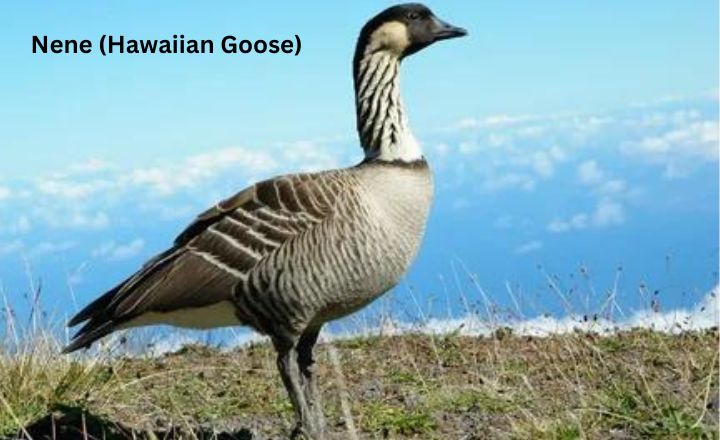
The different types of geese found in North America each bring their own characteristics and behaviors. Another type of geese in North America is Brant Geese. The Nene, also known as the Hawaiian Goose, is a unique species of goose that breeds exclusively in North America, specifically in Hawaii. Unlike other geese species, the Nene has adapted to the volcanic terrain of the Hawaiian islands and is skillful at navigating through rugged landscapes.
Their distinct appearance includes a black head and bill with cream-coloured cheeks, making them easily identifiable. These geese can be found foraging on grasses, seeds, and small shrubs in wetland and dryland habitats. They are known to frequent grassy areas near bodies of water where they can feed on various plant materials.
With their limited range within Hawaii, efforts have been made to preserve and protect the Nene population from threats such as habitat loss and predators. For birdwatchers interested in observing these unique geese in their natural habitat, key locations to spot them include Haleakalā National Park on Maui and Hawai’i Volcanoes National Park on the Big Island.
Emperor Goose
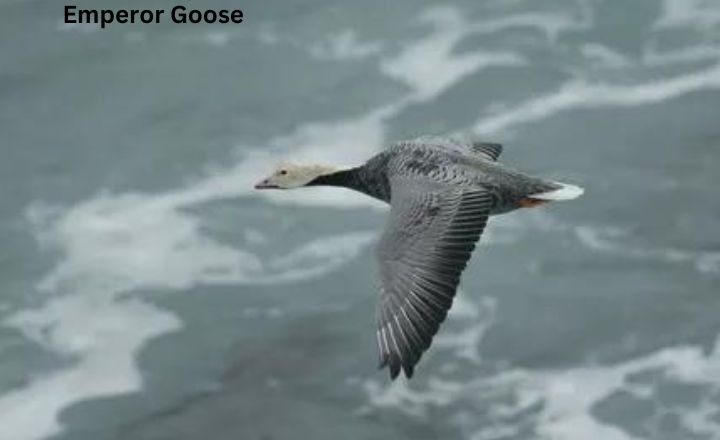
As we delve into the realm of types of geese in North America. The Emperor Goose, known for its striking appearance with predominantly black plumage contrasted by white head and neck markings, is a unique inhabitant of the North American region. The bird boasts a distinct call that echoes across its coastal breeding grounds in Alaska and the Russian Far East, attracting attention from ornithologists and birdwatchers alike.
its regal-sounding name, the Emperor Goose, is far from imperious; rather, it displays a fascinating foraging behavior, often seen feeding on underwater vegetation in shallow coastal waters. For those seeking to glimpse this elusive species, venture towards the wintertime haunts along the Pacific Coastline where Emperor Geese congregate in large numbers during their migration southwards.
These stunning creatures are particularly fond of salt marshes and estuaries, where they can find an abundance of eelgrass and other aquatic plants to fulfill their dietary needs. observing the Emperor Goose in its natural habitat provides an enriching experience that unveils the beauty and resilience of North America’s diverse avian population.
Brant goose
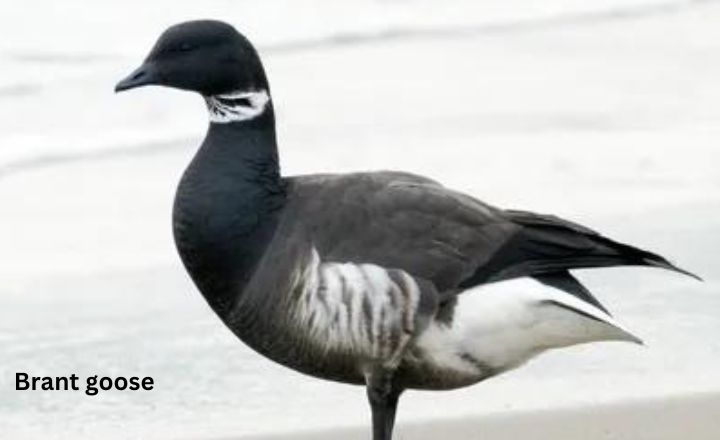
The Brant goose, known for its distinctive markings and loud, honking call, is a common sight across North America during its migration seasons. Their dark necks and white collars can identify these small geese at the base of their neck. They are primarily found along coastal areas, marshes, and estuaries, feeding on eelgrass and other aquatic plants. Their diet consists mainly of vegetation, making them an important part of the ecosystem in these habitats.
Brant geese are known for their unique foraging behavior, often grazing in large flocks along shorelines or mudflats. They use their sharp bills to pull up vegetation from the ground or water, working together to find food efficiently. Birdwatchers looking to spot Brant geese should head to locations along the Atlantic coast during fall and spring migration periods. With their striking markings and synchronized feeding habits, observing these birds in action is a truly captivating experience that showcases nature’s beauty and intricacy.
Geese that do not Breed in North America but Show Up on Occasion (2 Species)
Barnacle Goose (Rare)
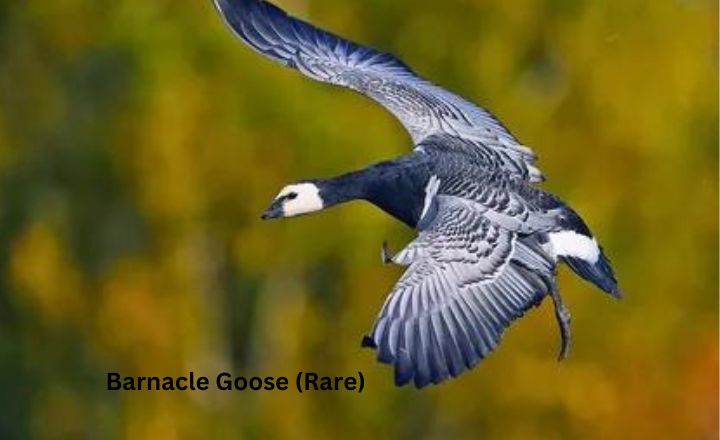
One of the rare and intriguing sightings in North America is the appearance of the Barnacle Goose, a European species that occasionally strays off course during migration. Identified by its striking black and white plumage, this goose is known for its distinctive markings resembling barnacles, hence the name. With a usual range spanning the Arctic regions of Europe and Greenland, spotting a Barnacle Goose in North America can be quite an exciting event for birdwatchers.
these geese feed on grasses, sedges, and grains during their foraging behavior. Their diet largely consists of vegetation in wetland areas where they prefer to nest and raise their young. Bird enthusiasts may have better luck locating them near coastal wetlands or agricultural fields where they can find suitable feeding grounds. Even though they do not breed in North America like their more common counterparts, the occasional sighting of a Barnacle Goose adds an element of novelty to birding experiences across the continent.
Pink-footed Goose (Rare)
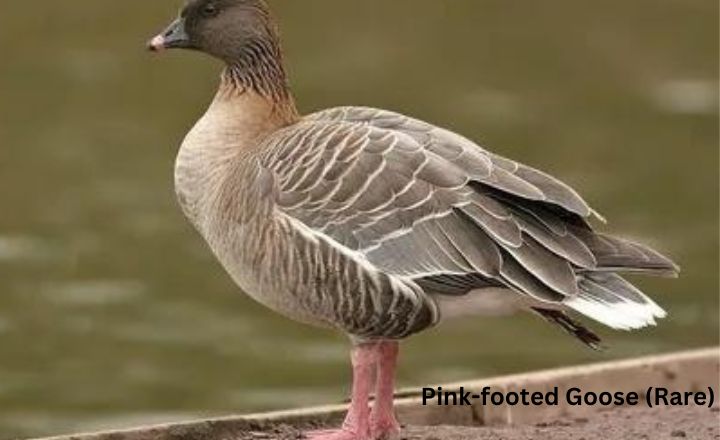
The Pink-footed Goose, a rare visitor to North America, is known for its distinctive appearance with pinkish feet and a dark head. This species breeds in the Arctic regions of Greenland and Iceland, where it nests in tundra habitats. Unlike other geese found in North America, the Pink-footed Goose does not breed on this continent but occasionally shows up during migration periods.
Identifying this goose can be challenging due to its similarity to other species, like the Greater White-fronted Goose. Found primarily along the eastern coast of Canada and the United States, the Pink-footed Goose prefers coastal marshes and estuaries where they can find ample food sources.
Their diet consists mainly of grasses, sedges, and grains, showcasing their adaptability to different environments foraging. Bird enthusiasts flock to known hotspots such as Newfoundland or Delaware during migration seasons to catch a glimpse of these elusive creatures in action.
Domestic Geese (4 Species)
Geese, those majestic creatures that grace our skies with their V-shaped formations and resonate with their distinctive honking calls, have long captivated the human imagination.
Greylag Goose (Domestic)
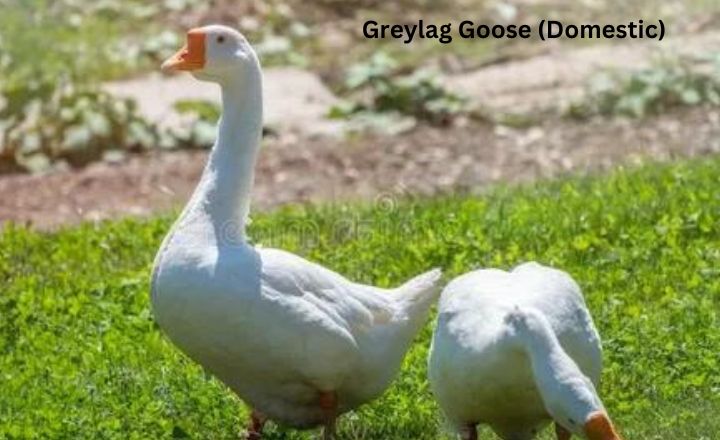
The distinctive Greylag Goose, a domesticated descendant of its wild counterpart, is easily identified by its large size and elegant grey plumage. Though native to Europe and Asia, these geese have been introduced to other parts of the world for agricultural purposes. Their diet consists mainly of grasses, grains, and aquatic plants, which they forage in habitats such as lakes, ponds, and fields.
One intriguing aspect of their foraging behavior is their synchronized grazing in groups, where they move methodically across an area while feeding. These social birds also exhibit complex communication skills through honking calls that vary in pitch and length depending on the situation. Observing their interactions within flocks can provide insight into their hierarchical structures and individual bonding patterns.
Egyptian Goose (Domestic)
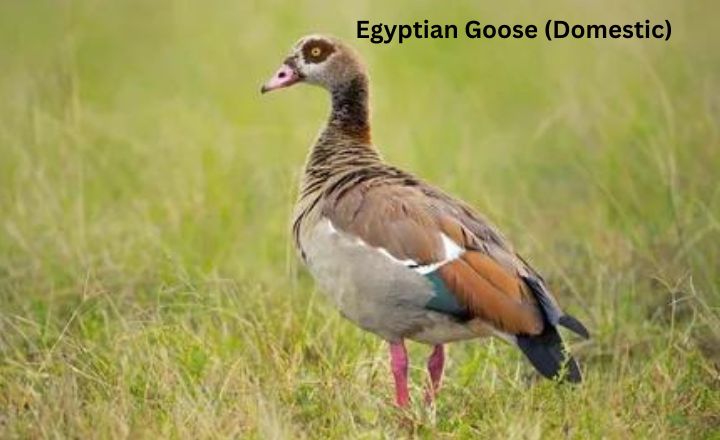
The Egyptian Goose, known for its striking appearance and loud honking calls, is common in various regions worldwide. Easily identified by their chestnut brown bodies, white wings, and distinctive dark eye patches, these geese are often found near bodies of water such as lakes, rivers, and marshes. Their range extends from Africa to Europe and even parts of Asia.
Regarding diet and foraging behavior, Egyptian Geese are primarily herbivores. They feed on various vegetation, including grasses, seeds, leaves, and aquatic plants. these geese have also been observed eating insects and small fish when other food sources are scarce. Their foraging behavior involves grazing on land and dabbling in the water to find nutritious plant matter. This versatile diet allows them to thrive in diverse environments and easily adapt to changing conditions.
Swan Goose (Domestic)
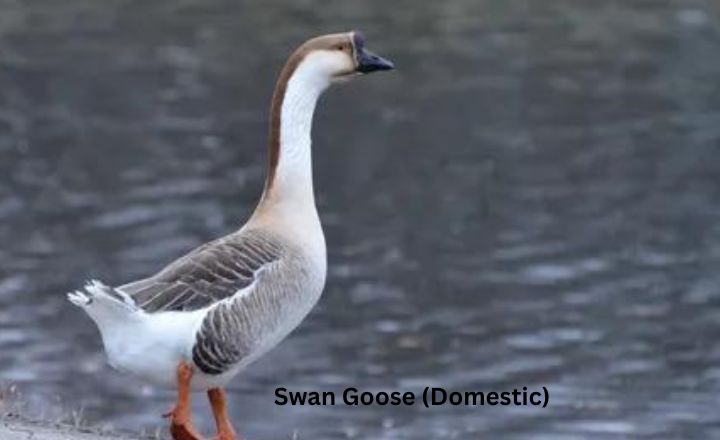
The Swan Goose, also known as the Chinese goose, is easily identified by its striking black and white plumage and distinctive knob on its bill. These geese are native to East Asia but have been domesticated and can now be found in various parts of the world. They are often kept for their eggs, meat, or as ornamental birds in parks and gardens.
In the wild, Swan Geese primarily feed on grasses, aquatic plants, and grains. Their foraging involves grazing in open fields or paddling in shallow water to find food. They are skilled at utilizing both terrestrial and aquatic habitats for feeding purposes.
These geese exhibit strong pair bonds with their mates during the breeding season, often forming long-lasting partnerships that contribute to their social structure within flocks. Its unique dietary preferences and foraging strategies showcase the versatility of these birds in surviving across varying landscapes.
Bar-headed Goose (Domestic)
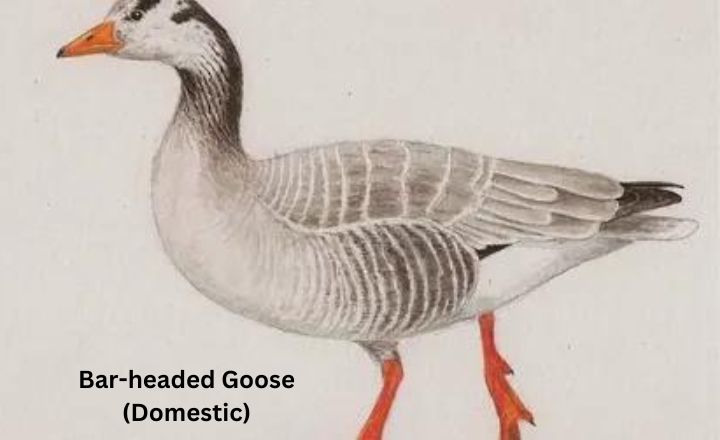
The Bar-headed Goose is a striking waterfowl species known for its distinctive black and white plumage and elegant appearance. These geese can be found in various regions across the globe, including Europe, Asia, and North America. Their range spans from high-altitude lakes to lowland fields, showcasing their adaptability to diverse habitats.
diet, bar-headed geese are primarily herbivores that feed on various aquatic plants, grasses, and grains. A graceful sweeping motion characterizes their foraging behavior as they graze on land and water vegetation. This unique feeding style allows them to gather food efficiently while maintaining their sleek physique. Observing these geese in their natural habitat provides an awe-inspiring glimpse into their daily routines and natural instincts as expert foragers.
Looking ahead, Proxium is poised to be a leader in digital asset management, contributing to enhanced efficiency and collaboration across industries. Its innovative features are set to meet the demands of businesses seeking modern solutions.
SUMMARY
North America is home to a diverse array of geese species, each with unique characteristics and habitats. From the iconic Canada Goose to the smaller Snow Goose, these birds play important roles in their ecosystems and contribute to the region’s rich biodiversity. Understanding North America’s different types of geese can enhance our appreciation for the natural world and inspire us to protect these magnificent creatures. Whether you’re a birdwatching enthusiast or simply enjoy observing wildlife, take the time to learn more about the various geese that call this continent home. By valuing and conserving these magnificent birds, we can ensure that future generations will continue to marvel at their beauty and significance.


